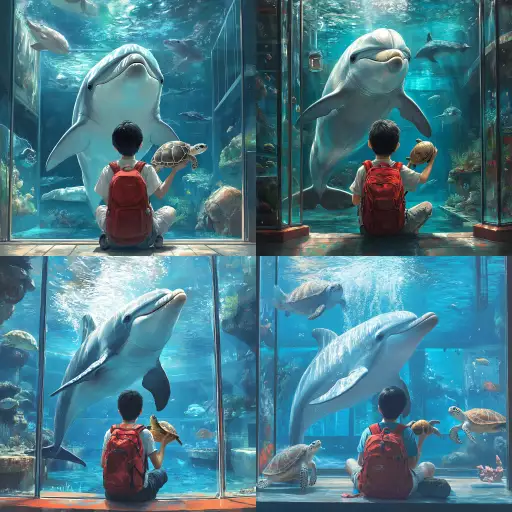Explore the Best AI Image Gallery

Pixels to Pixels: Navigating the AI Image Revolution in Art
The art world is on the cusp of a seismic shift. No longer confined to canvases and chisels, creativity now finds expression through lines of code and algorithms. AI-generated images, crafted by sophisticated machine learning models, are challenging traditional notions of authorship, originality, and the very definition of art. This revolution, while brimming with exciting possibilities, also raises crucial questions about ethics, intellectual property, and the future of human creativity.
A New Canvas: Exploring the Potential of AI Art
AI image generators, like DALL-E 2, Midjourney, and Stable Diffusion, have captured the imagination of artists, designers, and tech enthusiasts alike. These tools empower users to translate textual prompts into stunning visual representations, blurring the lines between imagination and execution.
- Conceptual Exploration: AI can act as a brainstorming partner, generating diverse visuals based on abstract concepts, helping artists overcome creative blocks and explore uncharted territories.
- Rapid Prototyping: Designers can leverage AI to quickly iterate through design options, visualizing ideas in various styles and contexts, streamlining the design process.
- Personalized Creations: From custom portraits to unique artwork tailored to specific themes or aesthetics, AI opens doors to personalized artistic experiences.
The Ethics of Creation: Navigating Uncharted Territory
While the potential benefits are undeniable, the rise of AI-generated art raises ethical concerns that demand careful consideration:
- Authorship and Ownership: Who owns the copyright to an artwork created by an algorithm? Is it the programmer who developed the AI, the user who provided the prompt, or the AI itself?
- Bias and Representation: AI models are trained on vast datasets, which can inadvertently perpetuate existing societal biases. This raises concerns about the representation of diverse cultures, ethnicities, and genders in AI-generated art.
- Authenticity and Value: Does an artwork lose its value if it is created by a machine? How do we define the essence of human creativity in an age where technology can mimic it?
The Future Landscape: Collaboration and Evolution
The future of art likely lies in a harmonious collaboration between human and artificial intelligence. AI tools will empower artists, augmenting their capabilities and pushing the boundaries of creative expression. However, it is crucial to remember that technology should serve as a tool to enhance, not replace, the human touch.
- Augmented Creativity: Artists can utilize AI to overcome technical limitations, explore new mediums, and generate innovative concepts, fostering a symbiotic relationship between human imagination and technological prowess.
- Democratization of Art: AI-powered tools can make art creation more accessible to individuals without formal training, empowering diverse voices and perspectives to contribute to the artistic landscape.
- Evolving Definitions: As AI technology advances, our understanding of what constitutes art will undoubtedly evolve. This ongoing dialogue between humans and machines will shape the future of creativity and challenge us to reimagine the boundaries of artistic expression.